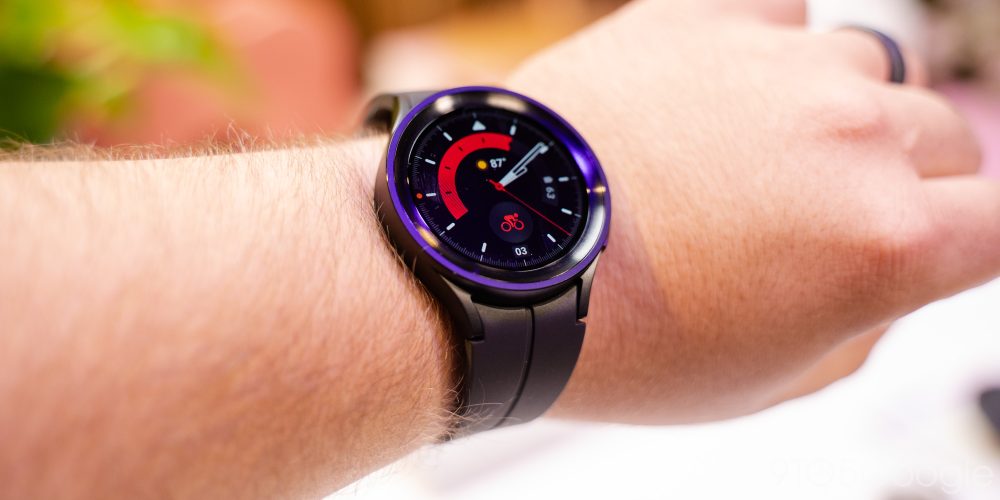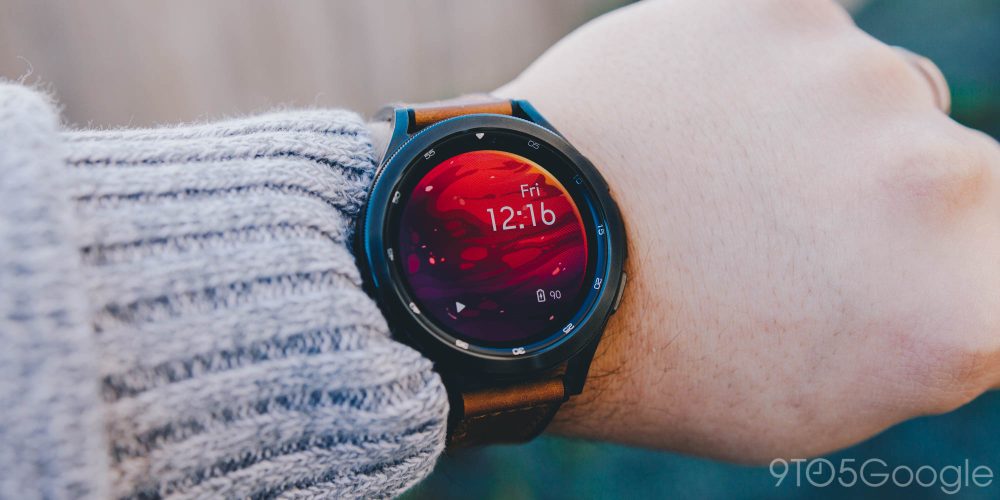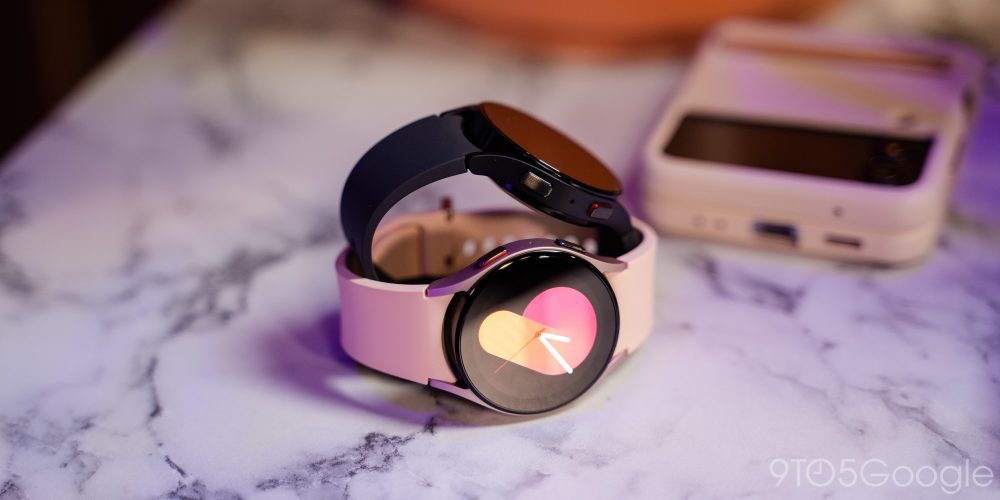
On paper, the Galaxy Watch 5 is a definite improvement on some features found in the Galaxy Watch line. But, does that mean it’s worth completely upgrading for a couple of new changes? We’ll break down each improvement and give you a better idea as to whether or not you should upgrade to the Galaxy Watch 5 or 5 Pro from a Galaxy Watch 4 or earlier.
The Galaxy Watch 5 and 5 Pro – What’s the difference?
Unveiled at Galaxy Unpacked 2022, the Galaxy Watch 5 series improves on its Wear OS 3 predecessor with a few key upgrades. While we haven’t had a chance to rigorously test the Galaxy Watch 5 and 5 Pro just yet, the specs give us a pretty good idea of what we’re looking at. The Galaxy Watch 5 and 5 Pro both run a few of the same features, including a brand new sapphire crystal display, Samsung’s improved BioActive Sensor, and an Exynos W920 chipset with 1.5 GB RAM.
Along with that, the Galaxy Watch 5 40mm has a 284 mAh battery, while the 44mm variant carries a 410 mAh pack. Both of these are substantial upgrades over last year’s model, giving the user a few extra hours in the day. The Galaxy Watch 5 Pro, on the other hand, packs a whopping 590 Mah battery, estimated to give the wearer around 80 hours of battery life. In effect, that’s over three straight days of power.

Besides the battery, the only other differentiating factor here is physical build. The Galaxy Watch 5 Pro is a little thicker, sporting a titanium casing that’s meant to take some of the toughest beatings. The 40mm and 44mm Galaxy Watch 5 devices are held in an “Armor Aluminum” casing, which will protect them but isn’t nearly as tough as titanium. That shell comes in several gorgeous colorways, while the Pro is available in grey and black.
When you take away the battery and physical look, these watches are essentially the same. They have the same chip, RAM, and display tucked inside their individual shells.
How does it compare to the Galaxy Watch 4?
As for the Galaxy Watch 4, it might be a year old, but the series is still holding strong. It offers a better package than some brand-new releases. The Galaxy Watch 4 series was the first to come out of the box with Wear OS 3, which is the same OS used on the Galaxy Watch 5.
Where Galaxy Watch 4 hardware is concerned, the watch has a lot going for it. The watch series incorporated Samsung’s – now one-year-old – BioActive Sensor. The then-new sensor did a fine job of collecting important fitness data, all within a small package. Unfortunately, that small package meant a small battery.

The Watch 4 came with a 247 mAh battery in the 40mm casing, while the 44mm size carried a 361 mAh pack. This was the same setup in the small and large Watch 4 Classic variants, respectively. In total, Samsung claimed you could get around 40 hours of battery life, though it felt closer to 24 hours at best.
Besides the battery, the Galaxy Watch 4 carried a lot of the same specs we deem worthy in a wearable now. That includes an Exynos W920 chipset, 1.5 GB RAM, and 16GB of storage.
Is it worth the upgrade?
It’s extremely difficult not to see the similarities between the two generations of Galaxy Watch, especially on paper. In almost every single aspect, these two sets of wearables are almost the exact same watch. To reiterate, they have the same SoC, an identical amount of RAM, and they both run Wear OS 3.
If you own a Galaxy Watch 4, it can be a tempting precedent, especially when considering the few improvements. The Galaxy Watch 5 has a new iteration of Samsung’s BioActive Sensor, which improves on its ability to accurately detect vitals, including heart rate and blood oxygen levels.
While we didn’t find the Galaxy Watch 4’s health tracking bad in any way, there were definitely areas where we wanted to see improvement. The new BioActive Sensor is supposed to bring that improvement and give us a better look at health stats.
Another improvement is battery life. On paper, the Galaxy Watch 5 is supposed to get around 10 extra hours of battery power over the Galaxy Watch 4. In theory, this should be enough to get you through a day and a night so that you can track your daily activity as well as your sleep. In reality, the improvement in battery life seems to be minimal when looking at the big picture.

Yes, you can get sleep tracking done with a full day’s worth of battery life. Unfortunately, the device still needs to charge shortly after waking up, leaving you in an awkward cycle of needing to charge the watch while you get ready for the day or before bed. Either way, those few extra hours might not do enough to completely change how you wear the watch, and they won’t give you an extra day of wear. Of course, that doesn’t take into consideration the Galaxy Watch 5 Pro, which excels in battery life over the 40mm and 44mm variants of the Watch 5.
Another upside to the Galaxy Watch 5 is the new sapphire crystal display. Sapphire crystal is much more scratch resistant than the Gorilla Glass found on the Galaxy Watch 4. This might be one of the biggest improvements to make its way onto the Watch 5, simply because it’s potentially more durable than its predecessor.
Given that the Galaxy Watch 3 is an older watch, it’s an easier decision to make. The Galaxy Watch 5 gains significant improvements over the Watch 3 with much better sensors, a Super AMOLED display under sapphire crystal, and an impressive improvement in battery life. Given the trade-in value Samsung is giving for the Galaxy Watch 3 during the pre-order phase – a whopping $190 – an upgrade to the Watch 5 is much easier to recommend.
Anything prior to that is going to be an even better upgrade. The Watch 5 and Exynos W920 do a great job of handling tasks. Not to mention, the Watch 4 and Watch 5 come with Wear OS 3 right out of the box. The newest Wear OS is an upgrade by itself.
What it all boils down to is cost. The Galaxy Watch 5 surprised us all with its minimally-changed final price starting at $279, even with the upgraded sapphire crystal display. The Galaxy Watch 4 started at around $249 back in 2021 and went up in price when considering LTE models as well as the Classic edition with a rotating bezel.
If you’re looking at the Galaxy Watch 5 Pro, you’re going to have to pay upward of $449 and even more for the LTE version. That’s a pretty steep jump, although it does come with a better material casing and a huge battery for extended use.
If you do own a Galaxy Watch 4 – whether Classic or not – you’re in a good position to upgrade, considering Samsung has some nice trade-in values attached to the Galaxy Watch 5. For instance, you can trade in a Galaxy Watch 4 Classic to get a Galaxy Watch 5 Pro for only around $209. That’s a $240 trade-in credit from Samsung. If you happen to have a Galaxy Watch 4, you can see a discount of $180, which gets the price down on a Watch 5 Pro to $269.
These values don’t change if you want to upgrade to a Galaxy Watch 5 instead of the Pro. You’ll still see $180 for the Watch 4 and $240 for the Watch 4 Classic. What might be even crazier is that Samsung will give you a $190 credit for the Galaxy Watch 3 – a two-year-old smartwatch.

Summary
If you’re happy with the Galaxy Watch 4 or are looking to get a Samsung wearable, it might be best to either hang in there or grab a Galaxy Watch 4 at a better value now that they’re “obsolete.” The Galaxy Watch 4 is a fine device that might have a few woes in the battery department, though, the Galaxy Watch 5 might not be the answer to much better battery life. In every other aspect, the Watch 5 is just a clone of the Watch 4 with a few key improvements to health tracking and slight battery upgrades.
As far as upgrading to the Galaxy Watch 5 Pro, you’ll definitely see huge improvements on battery life. If you do go for a Pro, try to trade in a Watch 4 or even Watch 3 since that can take down the price quite a bit.
More on the Galaxy Watch 5:
- Is the Galaxy Watch 5 and 5 Pro waterproof? What you need to know before taking a swim
- Galaxy Watch 5 and 5 Pro: Why is sapphire glass so special?
- Galaxy Watch 5 and 5 Pro hands-on: Refining the best Wear OS watches [Video]
Author: Andrew Romero
Source: 9TO5Google



